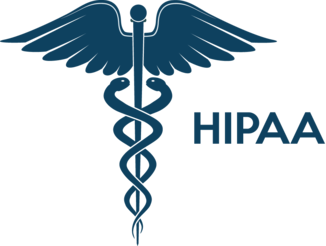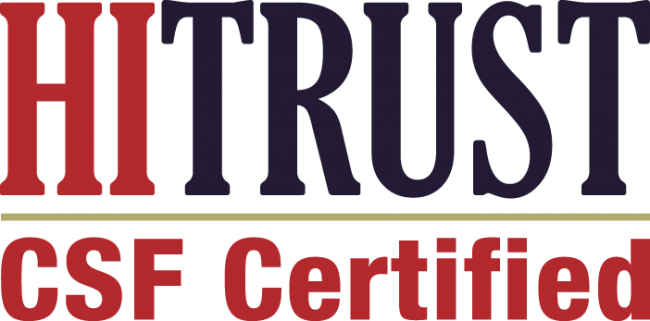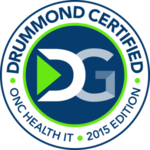The Medicare Behavioral Health Integration (BHI) program represents a significant shift in how mental health and substance use services are delivered and reimbursed within the Medicare system. As healthcare organizations navigate the complexities of implementing collaborative care models, care coordination platforms, and value-based payment structures, the need for comprehensive technology solutions has become paramount. HealthViewX’s integrated care coordination ecosystem emerges as a strategic enabler for successful Medicare BHI program implementation, providing the infrastructure, workflows, and analytics necessary to meet program requirements while optimizing patient outcomes and financial performance.
Understanding Medicare Behavioral Health Integration Program Requirements
Program Overview and Objectives
The Medicare BHI program is designed to improve access to mental health and substance use disorder services by promoting integrated care delivery models. The program emphasizes collaborative care approaches that combine primary care and behavioral health services, supported by care coordination and population health management strategies. Key objectives include reducing fragmentation of care, improving patient outcomes, enhancing provider satisfaction, and achieving cost-effective service delivery.
Core Program Components
Collaborative Care Model (CoCM)
The Collaborative Care Model serves as the foundation of Medicare BHI, requiring integration between primary care providers, behavioral health care managers, and psychiatric consultants. This model demands systematic approaches to screening, treatment planning, care coordination, and outcome monitoring across disciplines.
General Behavioral Health Integration (GBHI)
GBHI services focus on integrating behavioral health into primary care settings through care coordination activities, patient education, and provider consultation. These services require documentation of care coordination activities and demonstration of improved care processes.
Regulatory and Compliance Requirements
Medicare BHI implementation requires adherence to specific billing codes, documentation standards, quality measures, and reporting requirements. Organizations must demonstrate compliance with CMS guidelines while maintaining high-quality care delivery and appropriate utilization management.
HealthViewX Ecosystem: Architected for Medicare BHI Success
Comprehensive Platform Architecture
Integrated Care Management Hub
HealthViewX provides a centralized care management hub that connects all stakeholders in the behavioral health integration ecosystem. The platform supports the collaborative care team structure required by Medicare BHI, facilitating seamless communication between primary care providers, behavioral health care managers, psychiatric consultants, and patients.
Medicare-Compliant Workflow Engine
The platform’s workflow engine is specifically designed to support Medicare BHI billing codes and documentation requirements. Automated workflows guide care team members through required activities, ensure proper documentation, and facilitate compliant billing processes.
Population Health Management
Advanced population health capabilities enable organizations to identify eligible patients, track care coordination activities, monitor treatment outcomes, and manage panel sizes according to Medicare BHI requirements. Real-time dashboards provide visibility into program performance and compliance metrics.
Quality Measurement and Reporting
Built-in quality measurement tools track Medicare BHI-specific metrics, including screening rates, treatment response, care coordination activities, and patient satisfaction. Automated reporting capabilities ensure timely submission of required data to CMS and support continuous quality improvement initiatives.
Enabling Collaborative Care Model Implementation
Care Team Coordination
The HealthViewX platform facilitates the collaborative care team structure central to Medicare BHI success. Primary care providers can seamlessly refer patients to behavioral health care managers, who coordinate treatment plans with psychiatric consultants while maintaining continuous communication with the primary care team.
Patient Registry and Panel Management
Sophisticated patient registry capabilities support the population-based approach required for collaborative care. Care managers can efficiently manage patient panels, track treatment progress, and ensure timely follow-up according to protocol requirements. The system automatically flags patients requiring attention and supports proactive outreach efforts.
Systematic Care Protocols
The platform supports implementation of evidence-based care protocols required for Medicare BHI services. Standardized assessment tools, treatment algorithms, and outcome measures are integrated into clinical workflows, ensuring consistent application of best practices across the care team.
Psychiatric Consultation Integration
Seamless integration of psychiatric consultation services enables effective caseload review and treatment recommendations. The platform supports both synchronous and asynchronous consultation models, allowing psychiatric consultants to review cases efficiently and provide timely recommendations to care teams.
Optimizing General Behavioral Health Integration Services
Care Coordination Documentation
HealthViewX automates the documentation of care coordination activities required for GBHI billing. The platform tracks all care coordination interactions, maintaining detailed records of communication, referrals, care plan modifications, and patient education activities.
Provider-to-Provider Communication
Secure messaging and communication tools facilitate the provider-to-provider interactions central to GBHI services. Primary care providers can easily consult with behavioral health specialists, share patient information, and coordinate treatment approaches while maintaining compliance with privacy regulations.
Patient Engagement and Education
Integrated patient engagement tools support the patient education components of GBHI services. Patients can access educational resources, participate in self-management activities, and communicate with their care team through secure patient portals and mobile applications.
Care Plan Integration
The platform ensures that behavioral health components are seamlessly integrated into comprehensive care plans. Primary care providers can view behavioral health treatment plans alongside medical care plans, ensuring coordinated approaches to patient care.
Medicare Billing and Compliance Support
Automated Billing Code Assignment
The HealthViewX platform automatically assigns appropriate Medicare BHI billing codes based on documented care activities and time spent on coordination tasks. This automation reduces billing errors and ensures compliance with Medicare requirements.
Time Tracking and Documentation
Integrated time tracking capabilities ensure accurate documentation of care coordination activities for billing purposes. The system automatically captures time spent on various activities and associates it with appropriate billing codes and patient encounters.
Compliance Monitoring
Real-time compliance monitoring alerts care teams to potential issues with documentation, billing, or service delivery. The platform helps organizations maintain compliance with Medicare BHI requirements while optimizing reimbursement opportunities.
Audit Trail Maintenance
Comprehensive audit trails document all care coordination activities, providing the detailed records necessary for Medicare audits and compliance reviews. The platform maintains tamper-proof records of all system activities and user interactions.
Quality Improvement and Outcome Measurement
Evidence-Based Outcome Measures
HealthViewX incorporates validated outcome measurement tools required for Medicare BHI programs, including PHQ-9, GAD-7, and other standardized instruments. These tools are integrated into clinical workflows, enabling systematic outcome tracking and quality improvement initiatives.
Performance Analytics and Reporting
Advanced analytics capabilities provide insights into program performance, patient outcomes, and quality measures. Organizations can track key performance indicators, identify improvement opportunities, and demonstrate program effectiveness to stakeholders.
Benchmarking and Best Practices
The platform supports benchmarking against national quality measures and best practices, enabling organizations to compare their performance with industry standards and identify opportunities for improvement.
Continuous Quality Improvement
Built-in quality improvement tools support Plan-Do-Study-Act cycles and other improvement methodologies. Organizations can implement systematic approaches to quality enhancement while maintaining focus on patient outcomes and program effectiveness.
Implementation Strategy and Best Practices
Phased Implementation Approach
Successful Medicare BHI implementation typically requires a phased approach that begins with foundational capabilities and gradually expands to include advanced features. HealthViewX supports this approach through flexible configuration options and scalable architecture.
Change Management and Training
Comprehensive training programs and change management support ensure that care teams can effectively utilize the platform’s capabilities. Ongoing education helps staff adapt to new workflows and maximize the benefits of integrated care coordination.
Data Migration and Integration
Seamless integration with existing electronic health records, billing systems, and other healthcare technologies ensures continuity of operations during implementation. The platform’s interoperability capabilities facilitate data exchange and workflow integration.
Performance Monitoring and Optimization
Continuous monitoring of system performance, user adoption, and program outcomes ensures that implementation achieves its intended goals. Regular assessment and optimization help organizations maximize the platform’s impact on Medicare BHI success.
Financial Impact and Return on Investment
Reimbursement Optimization
HealthViewX helps organizations optimize Medicare BHI reimbursement through accurate billing, comprehensive documentation, and efficient care delivery. The platform’s automation capabilities reduce administrative costs while ensuring compliance with billing requirements.
Operational Efficiency Gains
Streamlined workflows and automated processes contribute to operational efficiency improvements that enhance program sustainability. Care teams can serve more patients effectively while maintaining high-quality care delivery.
Risk Adjustment and Value-Based Care
The platform supports risk adjustment activities and value-based care initiatives that are increasingly important in Medicare BHI programs. Comprehensive data capture and analytics capabilities enable organizations to optimize their performance under alternative payment models.
Cost Reduction Through Integration
Integrated care coordination reduces duplicated services, prevents unnecessary hospitalizations, and improves treatment adherence. These improvements contribute to overall cost reduction while enhancing patient outcomes.
Conclusion: Accelerating Medicare BHI Success Through Integrated Technology
The successful implementation of Medicare Behavioral Health Integration programs requires more than policy changes and payment reforms—it demands comprehensive technology infrastructure that can support collaborative care models, ensure compliance with complex regulations, and optimize both clinical and financial outcomes. HealthViewX’s integrated care coordination ecosystem provides the foundation necessary for Medicare BHI success, offering healthcare organizations the tools, workflows, and analytics capabilities needed to thrive in this new healthcare delivery paradigm.
By leveraging HealthViewX’s comprehensive platform, healthcare organizations can navigate the complexities of Medicare BHI implementation while focusing on their primary mission: delivering high-quality, coordinated care that improves patient outcomes and enhances the overall healthcare experience. The platform’s Medicare-specific features, combined with its broader care coordination capabilities, position organizations for both immediate program success and long-term sustainability in the evolving behavioral health landscape.
As Medicare continues to refine and expand its behavioral health integration initiatives, organizations equipped with robust technology platforms like HealthViewX will be best positioned to adapt to changing requirements, optimize program performance, and deliver the integrated, patient-centered care that represents the future of behavioral health services. The investment in comprehensive care coordination technology today creates the foundation for sustained success in Medicare BHI programs and the broader transformation of behavioral health care delivery.
The Medicare Behavioral Health Integration (BHI) program represents a significant shift in how mental health and substance use services are delivered and reimbursed within the Medicare system. As healthcare organizations navigate the complexities of implementing collaborative care models, care coordination platforms, and value-based payment structures, the need for comprehensive technology solutions has become paramount. HealthViewX’s integrated care coordination ecosystem emerges as a strategic enabler for successful Medicare BHI program implementation, providing the infrastructure, workflows, and analytics necessary to meet program requirements while optimizing patient outcomes and financial performance.
Understanding Medicare Behavioral Health Integration Program Requirements
Program Overview and Objectives
The Medicare BHI program is designed to improve access to mental health and substance use disorder services by promoting integrated care delivery models. The program emphasizes collaborative care approaches that combine primary care and behavioral health services, supported by care coordination and population health management strategies. Key objectives include reducing fragmentation of care, improving patient outcomes, enhancing provider satisfaction, and achieving cost-effective service delivery.
Core Program Components
Collaborative Care Model (CoCM)
The Collaborative Care Model serves as the foundation of Medicare BHI, requiring integration between primary care providers, behavioral health care managers, and psychiatric consultants. This model demands systematic approaches to screening, treatment planning, care coordination, and outcome monitoring across disciplines.
General Behavioral Health Integration (GBHI)
GBHI services focus on integrating behavioral health into primary care settings through care coordination activities, patient education, and provider consultation. These services require documentation of care coordination activities and demonstration of improved care processes.
Regulatory and Compliance Requirements
Medicare BHI implementation requires adherence to specific billing codes, documentation standards, quality measures, and reporting requirements. Organizations must demonstrate compliance with CMS guidelines while maintaining high-quality care delivery and appropriate utilization management.
HealthViewX Ecosystem: Architected for Medicare BHI Success
Comprehensive Platform Architecture
Integrated Care Management Hub
HealthViewX provides a centralized care management hub that connects all stakeholders in the behavioral health integration ecosystem. The platform supports the collaborative care team structure required by Medicare BHI, facilitating seamless communication between primary care providers, behavioral health care managers, psychiatric consultants, and patients.
Medicare-Compliant Workflow Engine
The platform’s workflow engine is specifically designed to support Medicare BHI billing codes and documentation requirements. Automated workflows guide care team members through required activities, ensure proper documentation, and facilitate compliant billing processes.
Population Health Management
Advanced population health capabilities enable organizations to identify eligible patients, track care coordination activities, monitor treatment outcomes, and manage panel sizes according to Medicare BHI requirements. Real-time dashboards provide visibility into program performance and compliance metrics.
Quality Measurement and Reporting
Built-in quality measurement tools track Medicare BHI-specific metrics, including screening rates, treatment response, care coordination activities, and patient satisfaction. Automated reporting capabilities ensure timely submission of required data to CMS and support continuous quality improvement initiatives.
Enabling Collaborative Care Model Implementation
Care Team Coordination
The HealthViewX platform facilitates the collaborative care team structure central to Medicare BHI success. Primary care providers can seamlessly refer patients to behavioral health care managers, who coordinate treatment plans with psychiatric consultants while maintaining continuous communication with the primary care team.
Patient Registry and Panel Management
Sophisticated patient registry capabilities support the population-based approach required for collaborative care. Care managers can efficiently manage patient panels, track treatment progress, and ensure timely follow-up according to protocol requirements. The system automatically flags patients requiring attention and supports proactive outreach efforts.
Systematic Care Protocols
The platform supports implementation of evidence-based care protocols required for Medicare BHI services. Standardized assessment tools, treatment algorithms, and outcome measures are integrated into clinical workflows, ensuring consistent application of best practices across the care team.
Psychiatric Consultation Integration
Seamless integration of psychiatric consultation services enables effective caseload review and treatment recommendations. The platform supports both synchronous and asynchronous consultation models, allowing psychiatric consultants to review cases efficiently and provide timely recommendations to care teams.
Optimizing General Behavioral Health Integration Services
Care Coordination Documentation
HealthViewX automates the documentation of care coordination activities required for GBHI billing. The platform tracks all care coordination interactions, maintaining detailed records of communication, referrals, care plan modifications, and patient education activities.
Provider-to-Provider Communication
Secure messaging and communication tools facilitate the provider-to-provider interactions central to GBHI services. Primary care providers can easily consult with behavioral health specialists, share patient information, and coordinate treatment approaches while maintaining compliance with privacy regulations.
Patient Engagement and Education
Integrated patient engagement tools support the patient education components of GBHI services. Patients can access educational resources, participate in self-management activities, and communicate with their care team through secure patient portals and mobile applications.
Care Plan Integration
The platform ensures that behavioral health components are seamlessly integrated into comprehensive care plans. Primary care providers can view behavioral health treatment plans alongside medical care plans, ensuring coordinated approaches to patient care.
Medicare Billing and Compliance Support
Automated Billing Code Assignment
The HealthViewX platform automatically assigns appropriate Medicare BHI billing codes based on documented care activities and time spent on coordination tasks. This automation reduces billing errors and ensures compliance with Medicare requirements.
Time Tracking and Documentation
Integrated time tracking capabilities ensure accurate documentation of care coordination activities for billing purposes. The system automatically captures time spent on various activities and associates it with appropriate billing codes and patient encounters.
Compliance Monitoring
Real-time compliance monitoring alerts care teams to potential issues with documentation, billing, or service delivery. The platform helps organizations maintain compliance with Medicare BHI requirements while optimizing reimbursement opportunities.
Audit Trail Maintenance
Comprehensive audit trails document all care coordination activities, providing the detailed records necessary for Medicare audits and compliance reviews. The platform maintains tamper-proof records of all system activities and user interactions.
Quality Improvement and Outcome Measurement
Evidence-Based Outcome Measures
HealthViewX incorporates validated outcome measurement tools required for Medicare BHI programs, including PHQ-9, GAD-7, and other standardized instruments. These tools are integrated into clinical workflows, enabling systematic outcome tracking and quality improvement initiatives.
Performance Analytics and Reporting
Advanced analytics capabilities provide insights into program performance, patient outcomes, and quality measures. Organizations can track key performance indicators, identify improvement opportunities, and demonstrate program effectiveness to stakeholders.
Benchmarking and Best Practices
The platform supports benchmarking against national quality measures and best practices, enabling organizations to compare their performance with industry standards and identify opportunities for improvement.
Continuous Quality Improvement
Built-in quality improvement tools support Plan-Do-Study-Act cycles and other improvement methodologies. Organizations can implement systematic approaches to quality enhancement while maintaining focus on patient outcomes and program effectiveness.
Implementation Strategy and Best Practices
Phased Implementation Approach
Successful Medicare BHI implementation typically requires a phased approach that begins with foundational capabilities and gradually expands to include advanced features. HealthViewX supports this approach through flexible configuration options and scalable architecture.
Change Management and Training
Comprehensive training programs and change management support ensure that care teams can effectively utilize the platform’s capabilities. Ongoing education helps staff adapt to new workflows and maximize the benefits of integrated care coordination.
Data Migration and Integration
Seamless integration with existing electronic health records, billing systems, and other healthcare technologies ensures continuity of operations during implementation. The platform’s interoperability capabilities facilitate data exchange and workflow integration.
Performance Monitoring and Optimization
Continuous monitoring of system performance, user adoption, and program outcomes ensures that implementation achieves its intended goals. Regular assessment and optimization help organizations maximize the platform’s impact on Medicare BHI success.
Financial Impact and Return on Investment
Reimbursement Optimization
HealthViewX helps organizations optimize Medicare BHI reimbursement through accurate billing, comprehensive documentation, and efficient care delivery. The platform’s automation capabilities reduce administrative costs while ensuring compliance with billing requirements.
Operational Efficiency Gains
Streamlined workflows and automated processes contribute to operational efficiency improvements that enhance program sustainability. Care teams can serve more patients effectively while maintaining high-quality care delivery.
Risk Adjustment and Value-Based Care
The platform supports risk adjustment activities and value-based care initiatives that are increasingly important in Medicare BHI programs. Comprehensive data capture and analytics capabilities enable organizations to optimize their performance under alternative payment models.
Cost Reduction Through Integration
Integrated care coordination reduces duplicated services, prevents unnecessary hospitalizations, and improves treatment adherence. These improvements contribute to overall cost reduction while enhancing patient outcomes.
Conclusion: Accelerating Medicare BHI Success Through Integrated Technology
The successful implementation of Medicare Behavioral Health Integration programs requires more than policy changes and payment reforms, it demands comprehensive technology infrastructure that can support collaborative care models, ensure compliance with complex regulations, and optimize both clinical and financial outcomes. HealthViewX’s integrated care coordination ecosystem provides the foundation necessary for Medicare BHI success, offering healthcare organizations the tools, workflows, and analytics capabilities needed to thrive in this new healthcare delivery paradigm.
By leveraging HealthViewX’s comprehensive platform, healthcare organizations can navigate the complexities of Medicare BHI implementation while focusing on their primary mission: delivering high-quality, coordinated care that improves patient outcomes and enhances the overall healthcare experience. The platform’s Medicare-specific features, combined with its broader care coordination capabilities, position organizations for both immediate program success and long-term sustainability in the evolving behavioral health landscape.
As Medicare continues to refine and expand its behavioral health integration initiatives, organizations equipped with robust technology platforms like HealthViewX will be best positioned to adapt to changing requirements, optimize program performance, and deliver the integrated, patient-centered care that represents the future of behavioral health services. The investment in comprehensive care coordination technology today creates the foundation for sustained success in Medicare BHI programs and the broader transformation of behavioral health care delivery.






